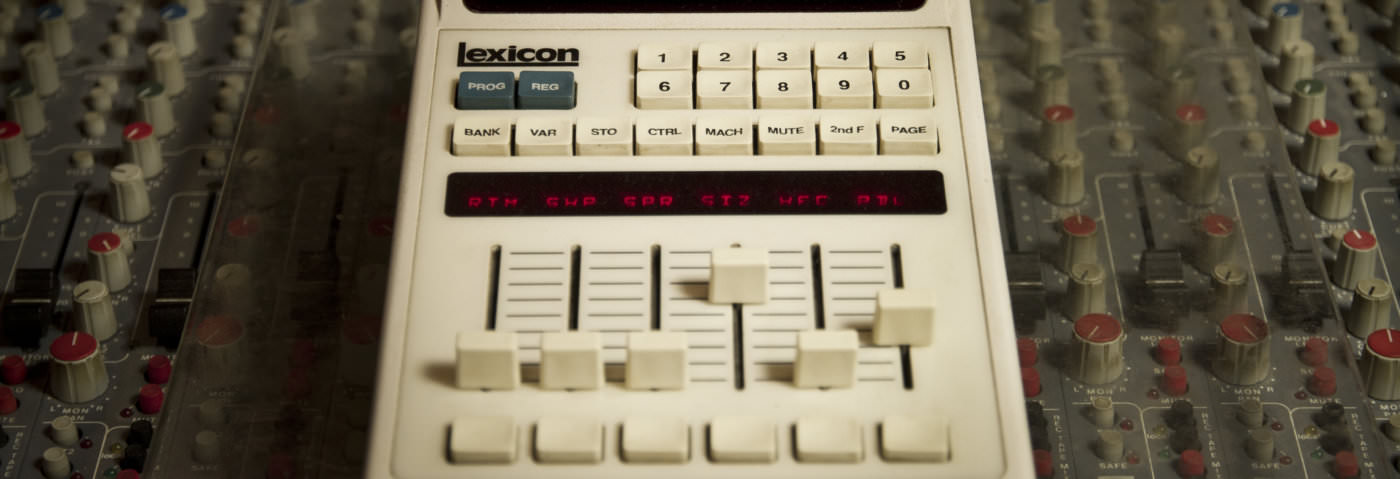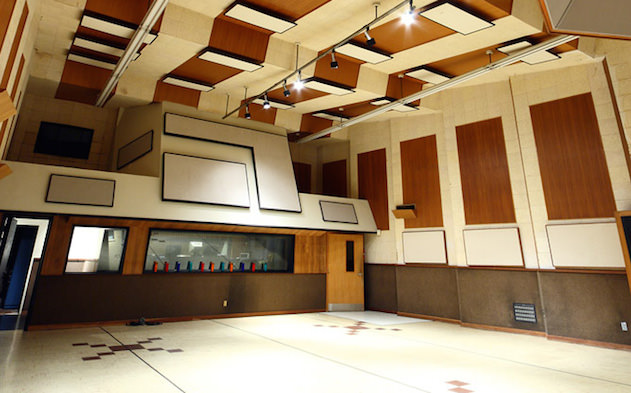Real acoustic spaces
Ask most producers to think of reverb and chances are the first thing that comes to mind is a plugin or perhaps a hardware unit. It’s somewhat ironic that the very last option many of us consider is the most affordable of all. In fact, it’s an option that we have access to without spending a single penny: the natural reverberation of acoustic spaces.
Given how much time some producers spend trying to create the perfect sound using artificial reverb, it’s baffling why so few consider going straight back to one of the original techniques. The use of natural reverb stretches all the way back to the days when the idea of recorded music was just a twinkle in Thomas Edison’s eye. Initially, recording engineers had no choice but to capture the sound of the room the performers were in. As techniques became more refined, producers began to take greater control of the acoustic space. Phil Spector famously used the reverberations of large performance spaces to help define his trademark wall of sound. At Abbey Road Studios, engineers and producers took advantage of purpose-built echo chambers with built-in speakers and microphones, allowing them to route audio signals through acoustic spaces and capture natural echoes before they even hit the tape.
interesting natural reverb can add character and a sense of physical space to your music
Nowadays, when we record synths, drum machines or even vocals in an isolation booth, we’re completely bypassing the natural reverberation of a real acoustic space. The answer is simple: play that sound in a room and record the ambience using a mic. It doesn’t necessarily have to be a high-definition, high-budget process; even a cheap speaker and mic placed in a space with an interesting natural reverb can add character and a sense of physical space to your music.
From the cavernous tails of sludgy reverberation you’d hear in a large hall through to the tight, bright echoes of a tiled bathroom, natural spaces are one of the fundamental tools in a producer’s arsenal. It’s surprisingly easy to use those spaces to your advantage.
In practical terms, you might well be thinking all this sounds a bit like hard work, but we’re not necessarily suggesting you turn your spare room into a dedicated echo chamber. Sure, you can re-amp a whole vocal track or synth line and record it back into your production to capture the echo – that’s a great way to add incredible character to your tracks – but there are other ways you can add a little natural ambience to your productions without going to that kind of effort. If you can’t handle the hassle of the real thing, we won’t judge you if you decide to fake it. Instead, think in terms of natural spaces but recreate them using artificial means. Whether it’s a room modelling plugin such as the UAD Ocean Way effect or a convolution reverb like Altiverb, it’s a useful exercise to think in terms of real spaces. Do you want to place that snare drum far away in a cavernous concert hall or close up and in your face with a small room effect?


03.00 PM
Excuse me but where is the Midiverb II at? What kind of dance music producer has a room for a plate reverb.
08.34 PM
Lumping the Space Echo in with reverbs seems to be pushing it a bit. It’s a great unit, but…
Also worth mentioning are the dirt-cheap plugins from ValhallaDSP (which borrow a lot of techniques from both Lexicon and Eventide), and the more expensive ones from 2CAudio.
02.34 PM
makes me laugh how people always get so mad at these features. guys, they’re just attack’s choices. if you don’t agree, write down your own list on a piece of paper and look at that instead. it’s hardly as if it’s some kind of official ranking, plus there’s a lot more to read here than just the names of 10 reverbs. maybe if you read it you’d realise they actually mentioned the midiverb AND the fact that most people don’t have room for a plate so should buy the plugin instead.
eric, i kind of agree with your point on the space echo but they are absolutely awesome for reverb as well as delay effects. even the delays are so messy and organic that it isn’t really delay as most people think of it these days. i got to borrow one off a friend for a while and what i actually liked it most for was a short reverb-style effect on vocal samples.
i also agree that the valhalla reverbs are excellent
10.16 PM
This is an unusually random feature from Attack…so few of these devices are really relevant to dance music eg the Lexicon 224…or EMT 140 (a vintage plate!)…’Acoustic space’ followed by a Bricasti! Its just all over the place…and honestly is that really relevant for dance music producers?
Here is my list:
2cAudio Aether
Valhalla Vintage Verb
Valhalla Shimmer
Relab 480
Eventide Black Hole pedal
Strymon Big Sky pedal
Eventide H3000 Rack unit
Roland Space Echo vintage delay
11.44 PM
Strymon Bluesky should’ve been in there